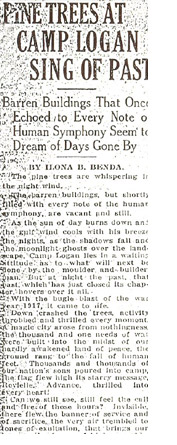 |
Conservancy
History
When Will
and Mike Hogg sold the property along Buffalo
Bayou, they were determined that the city would
continue to use it as they intended. Each of
the deeds executed for the donative park sale
carried the stipulation that the land was to
be used "for park purposes only" or
it would revert to the Hogg heirs. When the
Hogg brothers died, their sister, Ima, was left
to safeguard the park's interests. Miss Hogg
carefully checked locations and proposed plans
for "improvements" that were suggested.
During the 50 years she guarded the park, there
were more than 100 attempts to take over portions
of it. Proposals that failed included a 50-acre
fish hatchery, a site for a high school football
stadium, a building for the Museum of Natural
History, a site for the University of Houston,
a 30-acre fishing lake, the Astrodome, and a
site on which to drill for oil, to name but
a few. Over the years only the Highway Department
was able to wrest property away from Memorial
Park. In 1961, the city sold 23 acres of land
on the west side of the park for West Loop 610.
In addition, the park lost acreage when Interstate
10 was constructed, Woodway built, and Memorial
Drive widened.
In her later years, when Miss Hogg was no longer
physically able to make inspection trips to
inaccessible areas of the park, she appointed
a committee to help her, and to serve in her
stead when she was no longer alive. Sadie Gwin
Blackburn, Terry Hershey and Frank C. Smith,
Jr., members of the original Memorial Park Advisory
Committee, continue to serve in that capacity
today. In 1993, Chairman Sadie Gwin Blackburn
asked permission from Bill Smith, then Director
of the Parks and Recreation Department, to enlarge
the committee to include representatives of
the major user groups of the park. The committee,
formally organized in 2000 as the Memorial Park
Conservancy, now meets regularly to advise the
city concerning park issues.
|